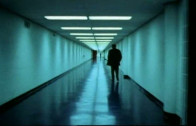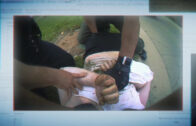The Trap
The Trap: What Happened to Our Dream of Freedom
If one steps back and looks at what freedom actually means in the West today, it’s a strange and limited kind of freedom. The United States and its empire self-describe fighting the Cold War for “individual freedom,” yet it is still something that the leaders of our so-called democracies continually promise to give us. Abroad, in Iraq and Afghanistan, the attempt to force “freedom” on to other people has led to more than just bloody mayhem, and this, in turn, has helped inspire terrorist attacks in Britain and elsewhere. In response, the government has dismantled long-standing laws that were designed to protect individual freedom and civil liberties.
Series
This first episode examines the rise of a mathematical model about human behaviour called Game Theory developed during the Cold War, and the way in which its premises filtered into economic thought. The programme traces the development of the theory with particular reference to the work of the mathematician John Nash, who constructed such models for which he won the Nobel Prize in economics. He invented games reflecting his beliefs about human behaviour, including one he called “Fuck You Buddy,” in which the only way to win was to ruthlessly betray your playing partner. While these games were mathematically coherent, they only worked correctly when the players obeyed the ground rules that they should behave selfishly and try to outwit and betray their opponents. As the 1960s became the 70s, the theories of a Scottish psychiatrist R.D Laing and the models of Nash began to converge, producing a widespread popular belief that the state was purely and simply a mechanism of social control which calculatedly kept power out of the hands of the public. This episode shows how this belief allowed economic models that left no room for altruism to unrealistically look credible, and then how this went on to serve the free-market beliefs of Margaret Thatcher who believed that by dismantling as much of the British state as possible, a new form of ‘social equilibrium’ would be reached. This was a return to Nash’s work, in which the paradoxical claim was that if everyone was pursuing their own selfish interests, a “stable society” would result. But as the mathematically modelled society is run on cold scientific data—performance targets, quotas and statistics—it is precisely this data in the information age, combined with the false belief that ruthless selfishness can provide stability and a fair society, that has created “The Trap.”
The second episode follows on from the ideas introduced in the first to develop the themes further. What is revealed, as in the context of the current age, is that drugs such as Prozac and lists of psychological symptoms which might indicate anxiety or depression are being used to normalise behaviour and make humans behave more predictably, like machines. This is not presented as a conspiracy, but as a logical outcome of the market-driven culture of self-diagnosis governed by check-lists based on every-day symptoms of human emotion.
The final part in this series focuses on the concepts of positive and negative liberty introduced in the 1950s by political theorist Isaiah Berlin. The episode briefly explains how negative liberty could be defined as freedom from coercion and positive liberty as the opportunity to strive to fulfil one’s potential. It is this outcome that summarises the entire series, contextualised both by the emergence and convergence of the ‘New Left’ (epitomised by the current age of individualism), with the right’s pursuit of “personal liberty” on a global scale with disastrous consequences.




